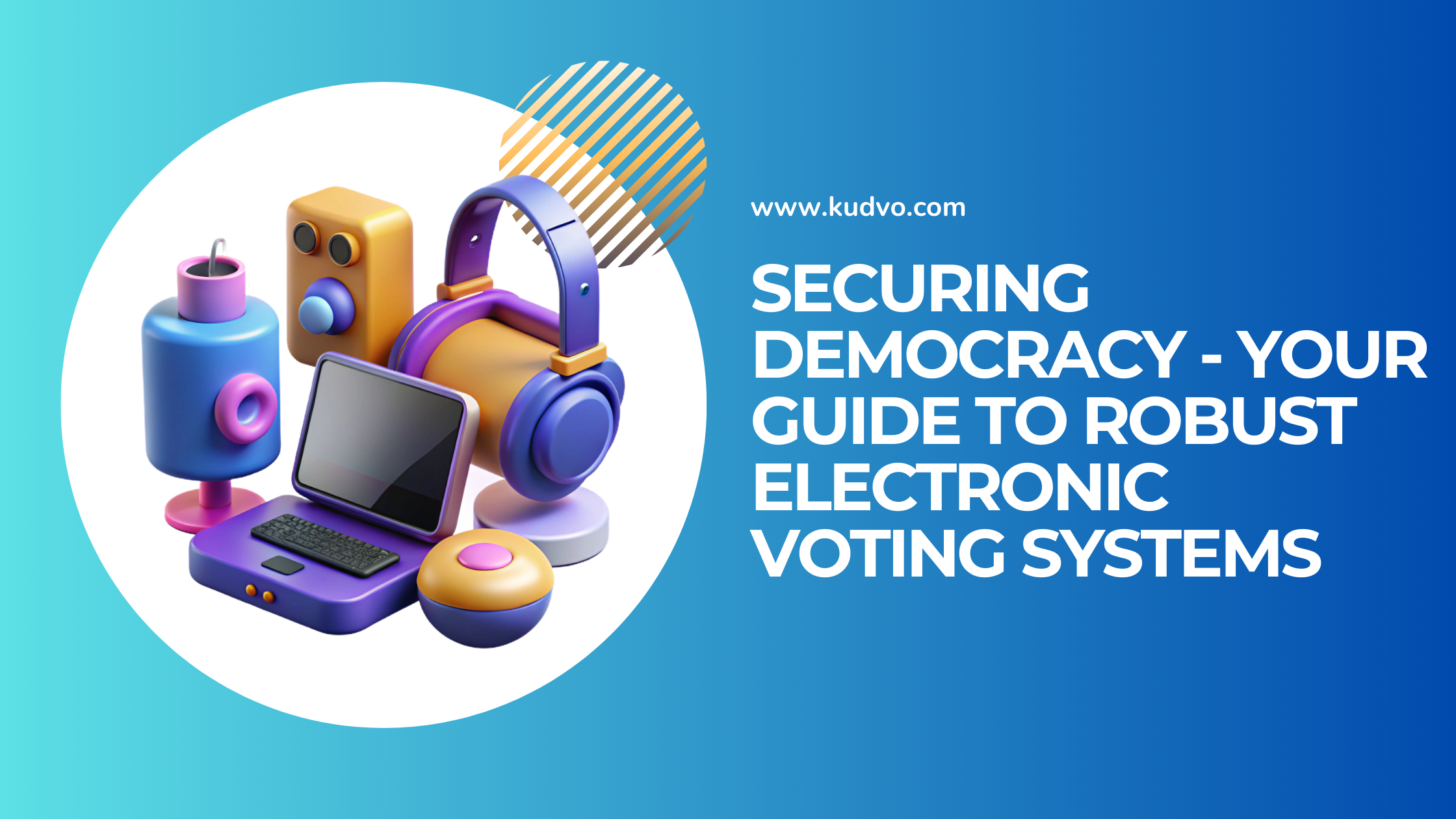Welcome to kudvo, your go-to resource for insights on secure electronic voting. As digital technology continues to advance, electronic voting stands out as a key player in modernizing and streamlining the electoral process. However, ensuring the security and integrity of these systems is crucial. Let’s delve into the core components that make electronic voting systems both secure and effective.

Robust Authentication Protocols
The first line of defense in secure electronic voting is robust authentication. To prevent unauthorized access and ensure the legitimacy of each vote, electronic voting systems must implement stringent measures. Biometric verification, multi-factor authentication, and secure cryptographic protocols are essential tools in this arsenal. These methods fortify defenses against fraudulent activities and unauthorized intrusions, maintaining the integrity of the voting process.
End-to-End Encryption
Encryption is the backbone of electronic voting security. End-to-end encryption ensures that voter data remains confidential and intact throughout the voting process. By encrypting ballots during transmission and storage, we reduce the risk of interception or tampering by malicious actors. This technique is fundamental in protecting the privacy and integrity of each voter’s selection.
Auditing Mechanisms for Transparency
Transparency is key to building trust in electronic voting systems. Implementing robust auditing mechanisms, such as cryptographic proofs and risk-limiting audits, is crucial. These tools allow stakeholders to verify the accuracy and fairness of election results, ensuring that both voters and electoral authorities can have confidence in the process.
Cybersecurity Resilience
Electronic voting systems must be prepared to fend off a variety of cybersecurity threats. From malware and hacking attempts to denial-of-service attacks, advanced cybersecurity measures are essential. Firewalls, intrusion detection systems, and regular security assessments are necessary to strengthen defenses and protect against potential vulnerabilities.
Collaborative Approach to Security
A collaborative approach is vital for tackling the challenges of secure electronic voting. Government agencies, election officials, cybersecurity experts, and technology vendors must work together to address security concerns. By leveraging collective expertise, stakeholders can develop and implement resilient voting systems that prioritize security, transparency, and accessibility.
Continuous Innovation and Adaptation
The landscape of electronic voting is ever-changing, driven by technological advancements and emerging security threats. Continuous innovation and adaptation are required to stay ahead of the curve. By embracing new technologies and strategies, electronic voting systems can remain resilient, secure, and trustworthy in the face of evolving challenges.
User-Friendly Interface and Accessibility
Finally, security alone isn’t enough. Electronic voting systems must also be user-friendly and accessible to ensure broad participation. Intuitive interfaces, multi-language support, and features for voters with disabilities enhance inclusivity and enable all citizens to exercise their democratic right to vote.
At kudvo, we are committed to exploring and promoting the advancements in secure electronic voting. Join us as we navigate the evolving landscape of voting technology and work towards a more secure, transparent, and inclusive electoral process.
